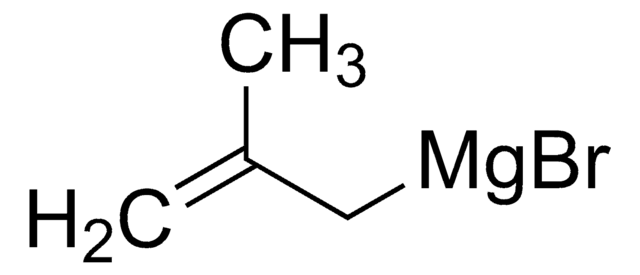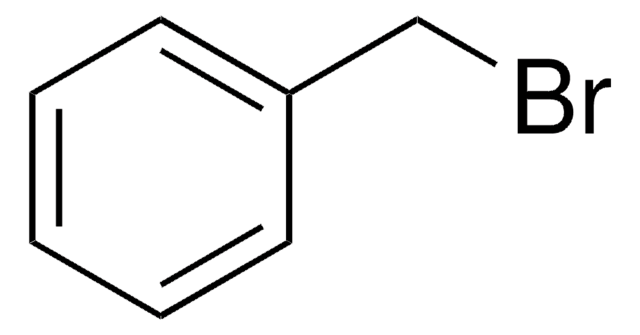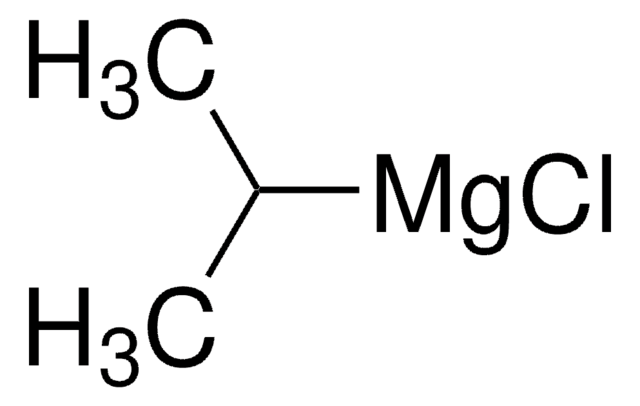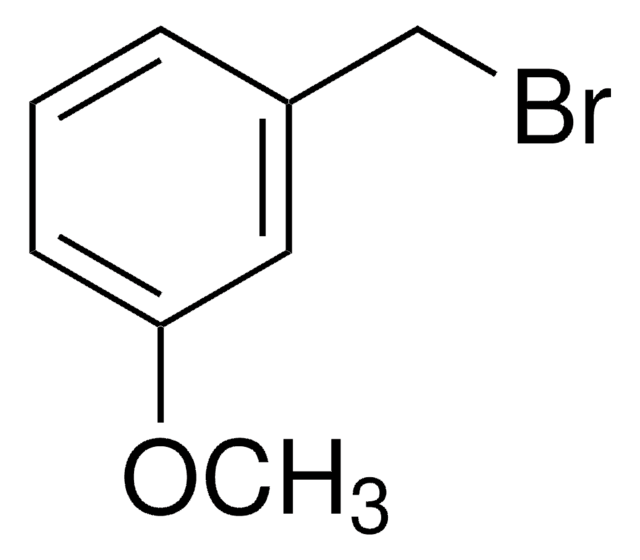427691
3-Iodobenzyl bromide
95%
Sinonimo/i:
α-Bromo-m-iodotoluene, 1-(Bromomethyl)-3-iodobenzene, 3-(Bromomethyl)iodobenzene, m-Iodobenzylbromide
About This Item
Prodotti consigliati
Livello qualitativo
Saggio
95%
Punto di fusione
46-51 °C (lit.)
Gruppo funzionale
bromo
iodo
Stringa SMILE
BrCc1cccc(I)c1
InChI
1S/C7H6BrI/c8-5-6-2-1-3-7(9)4-6/h1-4H,5H2
BACZSVQZBSCWIG-UHFFFAOYSA-N
Categorie correlate
Descrizione generale
Applicazioni
It may be used in the synthesis of the following:
- meta-substituted phenylalanine derivatives
- N6-substituted aristeromycin derivative
- (N)-methanocarba-N6-(3-iodobenzyl)adenosine
Avvertenze
Danger
Indicazioni di pericolo
Classi di pericolo
Eye Dam. 1 - Skin Corr. 1B
Codice della classe di stoccaggio
8A - Combustible corrosive hazardous materials
Classe di pericolosità dell'acqua (WGK)
WGK 3
Punto d’infiammabilità (°F)
235.4 °F - closed cup
Punto d’infiammabilità (°C)
113 °C - closed cup
Dispositivi di protezione individuale
Eyeshields, Faceshields, Gloves, type P3 (EN 143) respirator cartridges
Scegli una delle versioni più recenti:
Possiedi già questo prodotto?
I documenti relativi ai prodotti acquistati recentemente sono disponibili nell’Archivio dei documenti.
Il team dei nostri ricercatori vanta grande esperienza in tutte le aree della ricerca quali Life Science, scienza dei materiali, sintesi chimica, cromatografia, discipline analitiche, ecc..
Contatta l'Assistenza Tecnica.









